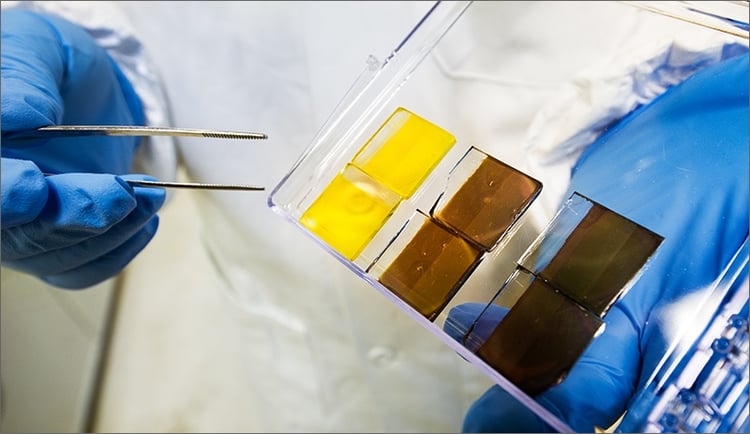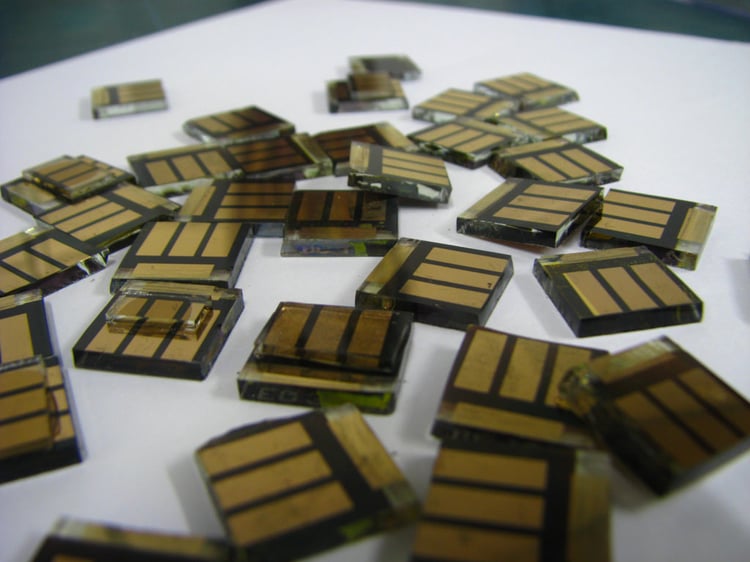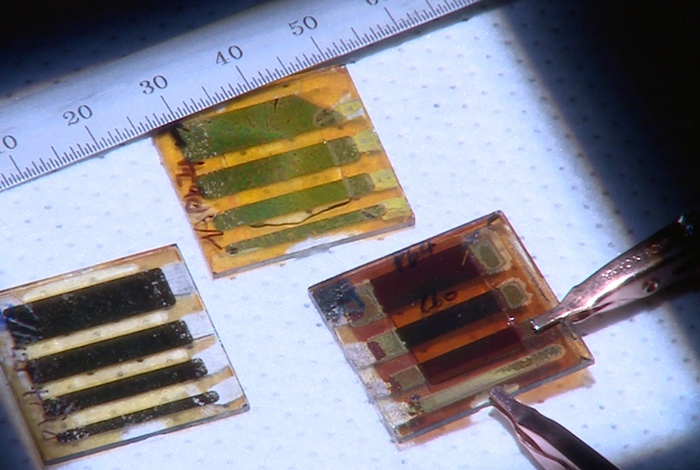We’ve talked about Perovskite Solar Cells before and we need to talk about them again.
In previous designs, researchers have used several elements when creating different forms of perovskite, a photovoltaic crystalline structure that’s thinner, more flexible, easier (and cheaper!) to manufacture than silicon crystals. But a new study has recently come out in the Oct. 21 edition of Science using very inexpensive and available materials to create the perovskite solar cell.

“Perovskite semiconductors have shown great promise for making high-efficiency solar cells at low cost,” says co-author of the study, Michael McGehee, a professor of materials science and engineering at Stanford. “We have designed a robust, all-perovskite device that converts sunlight into electricity with an efficiency of 20.3 percent.” That rate is on par with today’s silicon solar cells.
The device contains two perovskite solar cells stacked together and then printed onto glass. This technology isn’t the groundbreaking part (solar is already being printed onto a range of materials like fabric and plastic). No, what’s exciting is stacking the perovskite cells in tandem.

Past research has shown that adding layers of perovskite can improve the efficiency of silicon solar cells. But by creating a tandem device consisting of two all-perovskite cells, the cost and energy needed to create the panel goes down tremendously.
Co-lead author, Tomas Leijtens, a postdoctoral scholar at Stanford, explains: “A silicon solar panel begins by converting silica rock into silicon crystals through a process that involves temperatures above 3,000 degrees Fahrenheit. Perovskite cells can be processed in a laboratory from common materials like lead, tin, and bromine, then printed on glass at room temperature.”

Normally, building an all-perovskite panel doesn’t work, since the material isn’t stable enough to both capture energy from the sun and then produce a decent voltage, but by using a unique combination of tin, lead, cesium, iodine, and other organic materials, the researchers were able to create an efficient cell. “We developed a novel perovskite that absorbs lower-energy infrared light and delivers a 14.8 percent conversion efficiency,” says co-lead author Giles Eperon, an Oxford postdoctoral scholar at the University of Washington. Afterwards, they combined that cell onto another less-efficient, but more stable, perovskite cell.
The result had a combined efficiency of 20.3 percent.
“There are thousands of possible compounds for perovskites,” says Leijtens, “but this one works very well, quite a bit better than anything before it.”
Certainly, perovskite solar cells have quite a ways to go before they’re market-ready, but these developments will make perovskite solar cells an attractive option to other energy sources.
Interested to learn more? Call us at 407.331.9077 or contact us online! We’d love to talk about your solar options today… and what they could be tomorrow.
